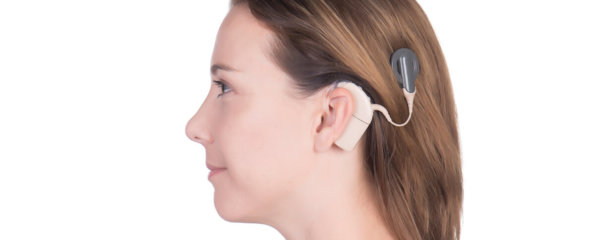Cochlear implants and their impact on speech
Biomedical researchers from the University of Sydney, working in collaboration with Cochlear Limited, have conducted a world-first study that could lead to more accurate predictions of how cochlear implant recipients are able to understand speech. Ultimately, this could allow for a cochlear implant to be tailored to the specific characteristics of the hearing loss of the individual using the device.
In the study, published in the journal Ear & Hearing, the experts have found a correlation between a computer model and the speech intelligibility in implant recipients. This might mean that by improving the performance of the model, the performance of individuals with cochlear implants may benefit in ways that have never before been explored.
“Cochlear implants are remarkable devices that have changed lives over the past several decades,” said lead author, PhD candidate Greg Watkins from the University of Sydney’s School of Aerospace, Mechanical and Mechatronic Engineering.
“However, despite this astonishing history, listening to and understanding another person’s speech when there is a lot of background noise is still much more difficult for people with cochlear implants than it is for people with normal hearing.”
Evidence-based research
Greg, who received a cochlear implant himself in February, explained that: “Computerised speech intelligibility models are powerful tools that allow us to evaluate how a hearing impairment may affect a cochlear implant recipient’s ability to understand speech in background noise.”
The researchers compared the accuracy of four different models of a recipient’s likelihood to understand speech. They discovered that a new model, known as the ‘output signal to noise ratio’ or OSNR was superior in predicting the improvements or decline in sentence recognition of actual cochlear implant recipients.
“The OSNR appears to have the capability to predict what will happen as a result of changing the parameters available to clinicians when tailoring the implant performance to the specific needs of a patient,” said Professor Gregg Suaning, a global leader in implantable bionics from the School of Aerospace, Mechanical and Mechatronic Engineering and co-author of the study.
“The result might be that changes that were never considered as possible improvements may now be used to achieve a better outcome for recipients of cochlear implants.”
Volunteers are vital
Brett Swanson, Principal Research Engineer at Cochlear Limited, highlighted another important aspect of the study.
“A cochlear implant stimulates the auditory nerve directly, so if you’re a researcher with normal hearing, you can’t listen to it yourself. Instead, we rely on dedicated volunteers with cochlear implants who spend hours in sound-proof rooms listening to sentences in noise and telling us what they hear. It is vital work, but mentally draining. OSNR has the potential to drastically reduce the amount of time that we need from our volunteers,” he said.
The next steps in this work include working with cochlear implant recipients to make changes in their implant based on the model predictions and demonstrating the outcome is indeed an improvement in speech recognition in noise.
(Source: The University of Sydney, Ear & Hearing)
Dates
Tags
Created by:

 Login
Login














